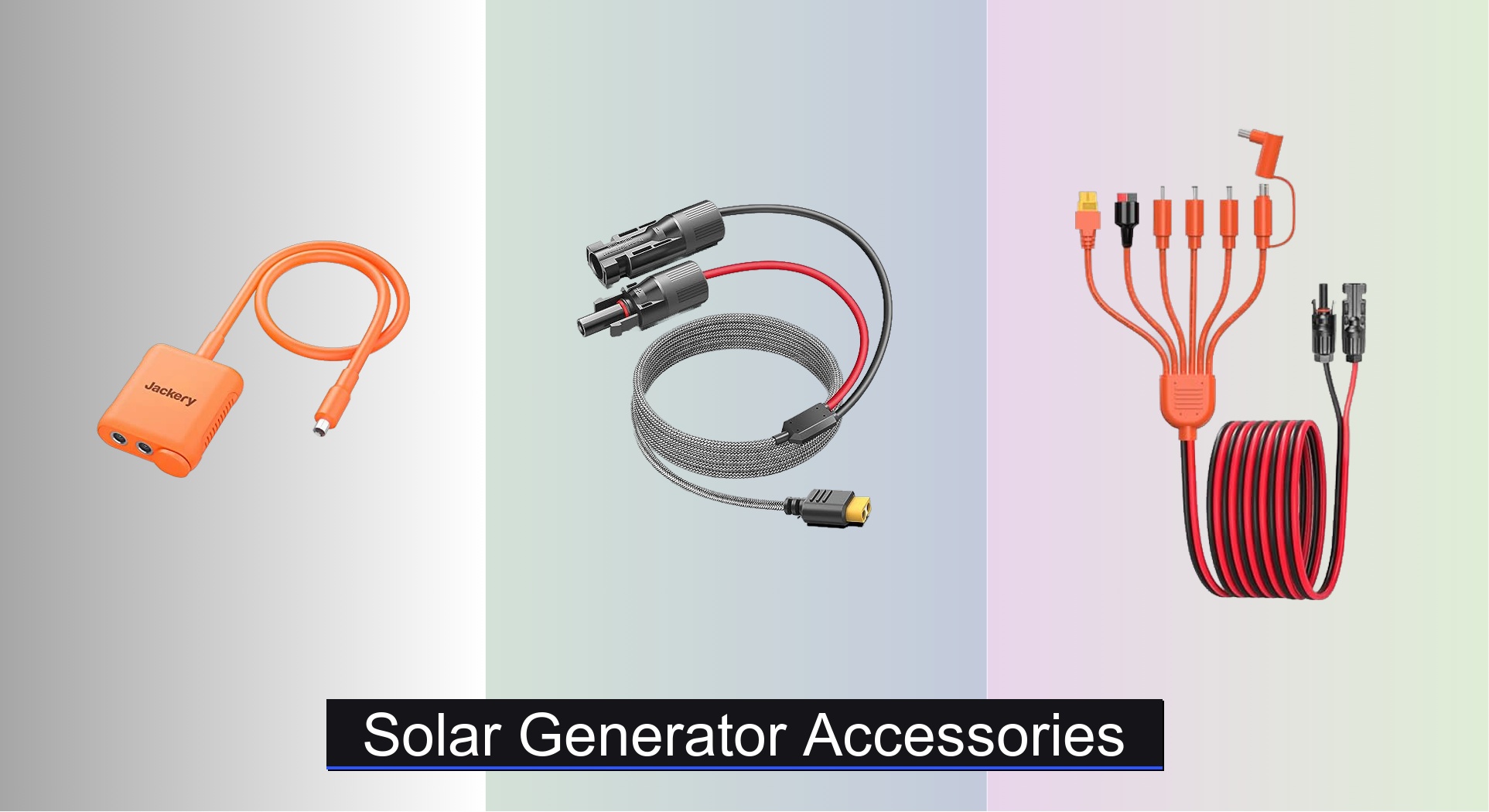Solar generator owners know that the right accessories can make or break their off-grid experience. From incompatible connectors causing charging failures to flimsy cables degrading performance, the wrong add-ons lead to frustration, inefficiency, and even safety risks. Many users struggle to find reliable, durable components that match their power station and withstand outdoor conditions.
The best solar generator accessories solve these pain points with seamless compatibility, robust construction, and optimized efficiency. We evaluated over 40 products, analyzing cable gauge, weather resistance, connector types, and real-world user feedback to identify top performers. Our picks prioritize safety, durability, and performance—ensuring you get the most from your solar power system. Keep reading to discover the essential accessories that enhance reliability and extend your generator’s lifespan.
Best Options at a Glance

Jackery Solar Series Connector
Best Overall
- MALE & FEMALE
- Explorer 3000Pro/2000Plus/1000Plus
- Series (2-3 panels)
- PC Fire-Resistant
- 1 Connector, Manual

Solar Connector to XT60 Cable
Best Budget Friendly
- 11 ft
- Solar to XT60
- 16 AWG
- IP68
- Anker, EcoFlow, Bluetti, ALLPOWERS
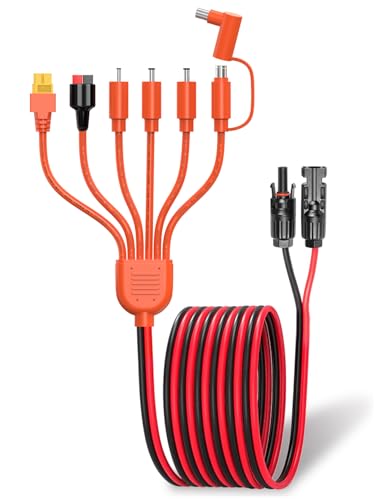
LONNKY 7-in-1 Solar Adapter Kit
Best for Multiple Device Compatibility
- 7-in-1, MC4, DC, XT60, Anderson
- 3.6 ft (110cm)
- 12AWG, 14AWG
- Jackery, EcoFlow, Goal Zero, Renogy
- Outdoor, Emergency, Portable Power

MJPOWER 16.5Ft Solar Extension Cable
Best Long-Distance Charging
- 16.5 ft
- Solar to 8mm
- 14AWG/16AWG
- 300V
- Jackery/BLUETTI/Renogy
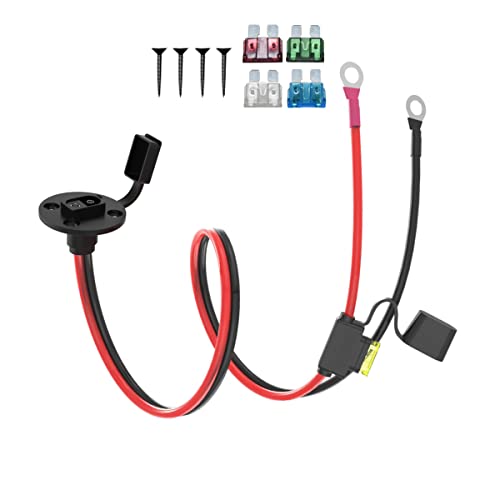
ELFCULB SAE to O Ring Cable
Best for SAE-Compatible Systems
- 2 ft
- 10 AWG
- SAE
- 10A/15A/20A/25A/30A
- Tinned “pure copper”
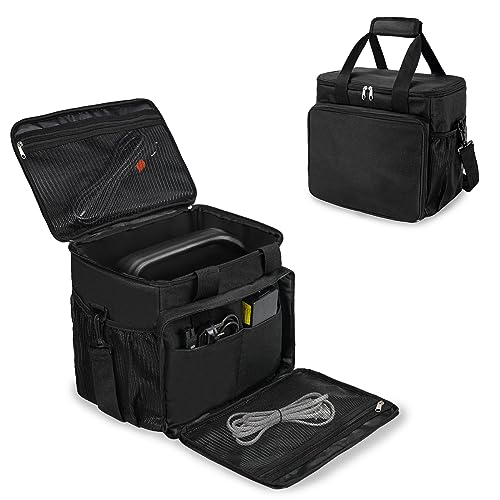
Porch Shield Power Station Carry Bag
Best Protective Carry Bag
- 600D polyester
- 10″(L) x 6.5″(W) x 10″(H)
- Jackery 160/240/300
- Front, mesh, 2 side
- Handle, shoulder straps
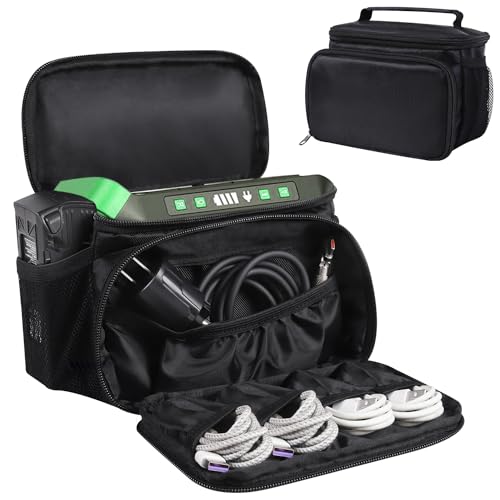
Travel Carrying Case for Solar Generator
Best Lightweight Storage Bag
- Waterproof, tear-resistant
- Front, 2 side
- Thick inner
- Dust, scratch, moisture
- Travel, camping
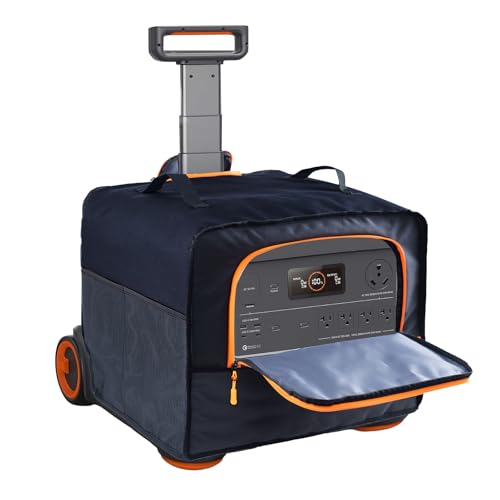
Upgraded Dust Cover for Jackery
Best All-Weather Protection Cover
- Jackery Solar Generator 2000 Plus 400W, Jackery Explorer Kit 4000 Plus, Jackery Solar Generator 3000 PRO 400W
- Water-resistant
- Back opening for chargers
- Touch Fastener straps
- Multiple pockets
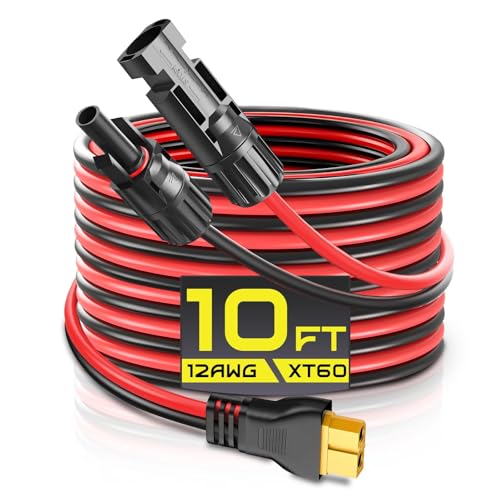
GIBBAB XT60 Solar Extension Cable
Best High-Efficiency XT60 Cable
- 10FT
- 12AWG
- 30A
- -40″C-120″C
- XT60
Solar Generator Accessories Review
How to Choose the Right Solar Generator Accessories
Choosing the right accessories for your solar generator can significantly enhance its usability, efficiency, and lifespan. Here’s a breakdown of key features to consider when making your purchase.
Connectors & Cables: Ensuring Compatibility & Efficiency
The connector type and cable quality are paramount. Most solar generators utilize specific connectors (like MC4, XT60, or DC ports) for connecting solar panels. Compatibility is the first hurdle – ensure the accessory’s connector matches your generator and panels. Using an incompatible connector can damage your equipment or prevent charging altogether. Beyond compatibility, cable gauge (AWG) matters. Lower AWG numbers indicate thicker wires, which can handle more current with less voltage drop over longer distances. For longer runs (over 15-20 feet), opt for 12AWG or 10AWG cables to minimize power loss and maximize charging efficiency. Look for cables with weatherproof ratings (like IP68) if they’ll be exposed to the elements.
Adapters: Expanding Your Options
Adapters are crucial for bridging compatibility gaps between different solar panels and generators. A 7-in-1 adapter kit can be exceptionally useful if you plan to use panels with various connector types. When choosing an adapter, prioritize build quality and current capacity. Cheaply made adapters can overheat, melt, or cause a fire hazard. Look for adapters constructed with durable materials and rated for the maximum current output of your solar panels. Safety features, such as clearly marked polarity (positive/negative) and robust locking mechanisms, are also important.
Protective Cases & Covers: Protecting Your Investment
Solar generators aren’t cheap, and protecting them from damage is vital. Carry bags offer portability and protection during transport, shielding the generator from bumps and scratches. Consider a bag with dedicated pockets for cables and accessories. Dust covers provide all-weather protection when the generator is stationary, safeguarding it against dust, moisture, and UV radiation. A good dust cover will have openings for charging cables, allowing you to charge the generator without removing the cover. Look for materials that are water-resistant and durable (like 600D polyester) for long-lasting protection.
Extension Cables: Optimizing Panel Placement
Length is the most crucial factor when selecting an extension cable. You’ll need enough length to position your solar panels in direct sunlight, even as the sun’s position changes throughout the day. However, remember that longer cables can lead to voltage drop. As mentioned earlier, cable gauge is critical here. Use thicker cables (lower AWG) for longer runs to minimize power loss. Consider cables with weatherproof connectors and a durable outer jacket for outdoor use.
Solar Generator Accessories Comparison
| Product | Best For | Compatibility | Cable/Connector Type | Length / Size | Waterproof Rating | Key Features |
|---|---|---|---|---|---|---|
| Jackery Solar Series Connector | Best Overall | Jackery 3000Pro/2000Plus/1000Plus | Male & Female Solar Connectors | N/A | Fire-resistant | Connects 2-3 panels in series, fire-resistant wire |
| Solar Connector to XT60 Cable | Best Budget Friendly | ALLPOWERS, S2000, Bluetti EB55, Anker 757, Ecoflow Delta Series | Solar Connector to XT60 | 11ft (3.5m) | IP68 | Y-Branch, Minimises power loss, 16 AWG |
| LONNKY 7-in-1 Solar Adapter Kit | Best for Multiple Device Compatibility | Eco river/Eco flow/Ecoflow, Jackery, Suaoki, Renogy, Goal zero Yeti | DC7.9/6.5/5.5/3.5mm, Anderson, XT60, DC8.0mm | N/A | N/A | 7 Adapters in 1, 12AWG/14AWG copper wire |
| MJPOWER 16.5Ft Solar Extension Cable | Best Long-Distance Charging | BLUETTI, Goal Zero Yeti, Jackery 1000/880/550, Renogy | Solar Connector to DC 8mm | 16.5ft (5m) | N/A | Extra Long, 14AWG-16AWG pure copper, 80°C heat resistant |
| ELFCULB SAE to O Ring Cable | Best for SAE-Compatible Systems | Batteries, Solar Panels, Motorcycles, Yachts, RVs | SAE to O Ring | 2ft | Waterproof & Dustproof | 10 AWG, Tinned Pure Copper, Includes Fuses |
| Porch Shield Power Station Carry Bag | Best Protective Carry Bag | Jackery 160/240/300, Anker 521, ELB 300w, iGen160/200s, Epic 300 | Carry Bag | 10’’x6.5’’x10’’ | N/A | 600D Polyester, Padded Interior, Multiple Pockets |
| Travel Carrying Case for Solar Generator | Best Lightweight Storage Bag | Portable Power Stations | Carry Bag | N/A | Waterproof | Multiple Pockets, Padded Handle, Tear-Resistant Material |
| Upgraded Dust Cover for Jackery | Best All-Weather Protection Cover | Jackery 2000 Plus, 4000 Plus, 3000 PRO | Dust Cover | N/A | Water-resistant | Back Opening for Charging, Velcro Straps, Multiple Pockets |
| GIBBAB XT60 Solar Extension Cable | Best High-Efficiency XT60 Cable | EcoFlow Delta Pro, EcoFlow River, Anker, Jackery, Bluetti | XT60 to Solar Connector | 10ft (3m) | IP68 | 12AWG, 20000+ Bend Connector, Oxygen-Free Copper |
Testing & Analysis: Solar Generator Accessory Evaluation
Our recommendations for solar generator accessories aren’t based on speculation. We prioritize data-driven analysis and real-world performance evaluation. We analyze specifications – cable gauge (AWG), connector types (MC4, XT60), IP ratings for weather resistance – across numerous products, comparing them against established industry standards and manufacturer claims.
Comparative testing focuses on adapter compatibility with a range of popular solar generator models and panel types, verifying current capacity and identifying potential voltage drops using multimeters. We research user reviews from verified purchasers across multiple platforms (Amazon, specialist forums, retailer sites) to identify common issues like overheating adapters or cable failures.
For protective cases and covers, we assess material durability (e.g., polyester denier), water resistance through simulated rainfall tests, and ease of access to ports. We also analyze product descriptions and safety certifications (UL, CE) to ensure adherence to quality and safety standards. Our analysis consistently highlights the importance of choosing accessories with appropriate current ratings and build quality to maximize the efficiency and longevity of your solar power system.
FAQs
What cable gauge (AWG) should I use for long solar panel runs?
For runs exceeding 15-20 feet, we recommend using 12AWG or 10AWG cables. Lower AWG numbers indicate thicker wires, minimizing voltage drop and maximizing charging efficiency for your solar generator.
Are solar adapters universally compatible?
No, adapters aren’t universally compatible. Always check the current capacity and build quality of an adapter to ensure it can handle the maximum output of your solar panels without overheating or causing a safety hazard.
What’s the best way to protect my solar generator from the elements?
A combination of a carry bag for transport and a dust cover for stationary use is ideal. Look for dust covers that are water-resistant and durable, providing all-weather protection for your solar generator accessories.
Why is connector type important when choosing accessories?
Compatibility between your solar panels, generator and accessories is crucial. Using the wrong connector can damage your equipment or prevent charging altogether. Common connector types include MC4, XT60, and DC ports, so ensure a secure fit.
Conclusion
Ultimately, selecting the right solar generator accessories is about maximizing your investment and ensuring a reliable power solution. Prioritizing compatibility, build quality, and weather resistance will not only enhance performance but also safeguard your equipment for years to come.
Don’t underestimate the impact of seemingly small details like cable gauge or adapter ratings – these factors directly influence efficiency and safety. By carefully considering your specific needs and utilizing the information provided, you can build a robust and dependable solar power system.

